Complete Solutions to SINGLE ANSWER TYPE of chapter MECHANICAL PROPERTIES OF SOLIDS of Class 11 book with complete answers and questions
| Class 11 | PHYSICS |
| Chapter | MECHANICAL PROPERTIES OF SOLIDS |
| NARAYANA | SINGLE ANSWER TYPE |
| Number Of Questions | 15 |
| Academic Year | 2023-24 |
A steel rod of cross-sectional area `Im^(2)` is acted upon by forces as shown in the Fig. Determine the total elongation of the bar. Take `Y = 2.0xx10^(11) N//m^(2)`
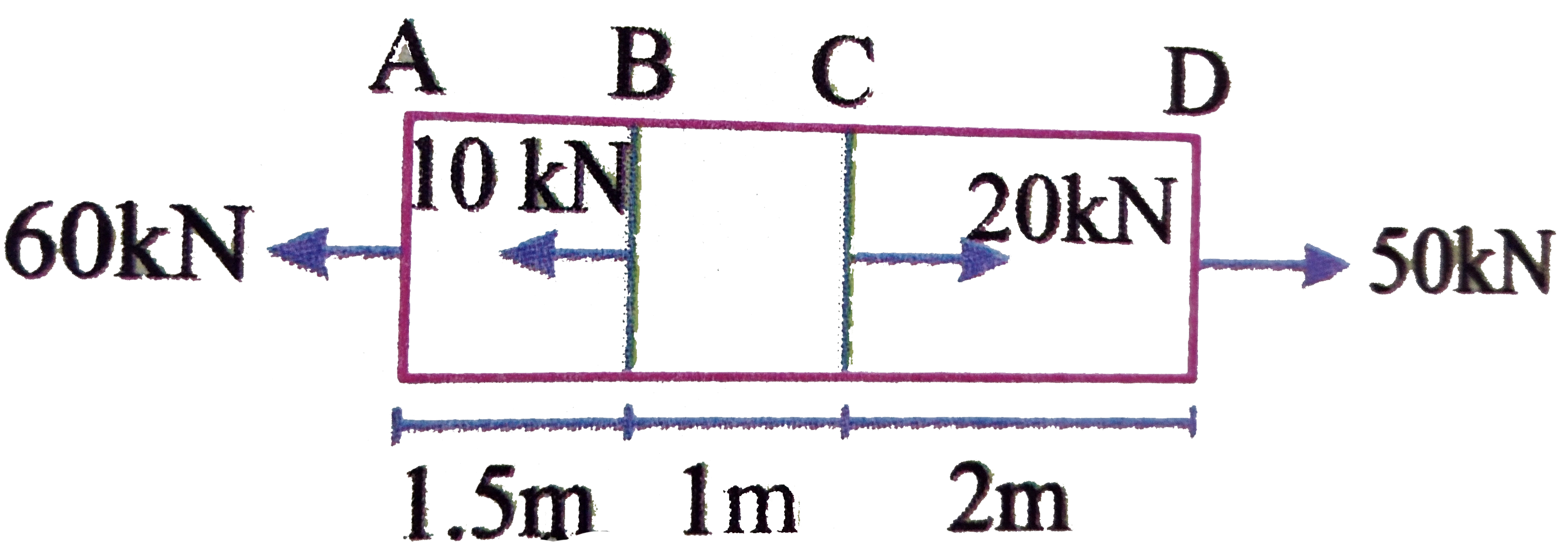
View SolutionA `30.0 kg` hammer, moving with speed a `20.0ms^(-1)` strikes a steel spike `2.30 cm` in diameter. The hammer rebounds with speed `10.0ms^(-1)` after `0.110s.` What is the average strain in the spike during the impact.?
View SolutionWhen a weight `W` is hung from one end of a wire of length `L` (other end being fixed), the length of the wire increases by `l`. If the same wire is passed over a pulley and two weights `W` each are hung at the two ends,what will be the total elongation in the wire?

View SolutionA uniform heavy rod of weight W, cross sectional area a and length L is hanging from fixed support. Young modulus of the material of the rod is Y. Neglect the lateral contraction. Find the elongation of the rod.
View SolutionA uniform elastic plank moves due to a constant force `F_(0)` applied at one end whose area is `S`. The Young's modulus of the plank is `Y`. The strain produced in the direction of force is
View SolutionA pendulum bob of mass `m` hangs form a massless elastic string. The potential energy (elastic + gravitational) of the system (bob + string + earth) measured relative to the position of the bob corresponding to the normal length of the string is: (where `x` = static deformation (elongation) of the string.)
View SolutionThe elastic limit of an elevator cable is `2xx10^(9) N//m^(2)`. The maximum upward acceleration that an elevator of amss `2xx10^(3)kg` can have been supported by a cable would not exceed half of the elastic limit would be
View SolutionThe adjacent graph shows the estension `(Deltal)` of a wire of length 1m suspended from the top of a roof at one end and with a load W connected to the other end. If the cross-sectional area of the wire is `10^-6m^2`, calculate the Young's modulus of the material of the wire.
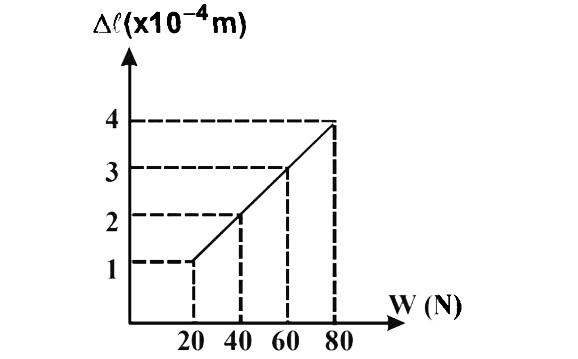
View SolutionA horizongal rod fixed at one of its ends has lengtht `l`, rigidly modulus `eta` and area of cross-sectional `A`. A bob of mass `m` hangs from the freee end of the rod by a light spring of stiffness constant `k`, Find the small displacement of the free end of the rod.
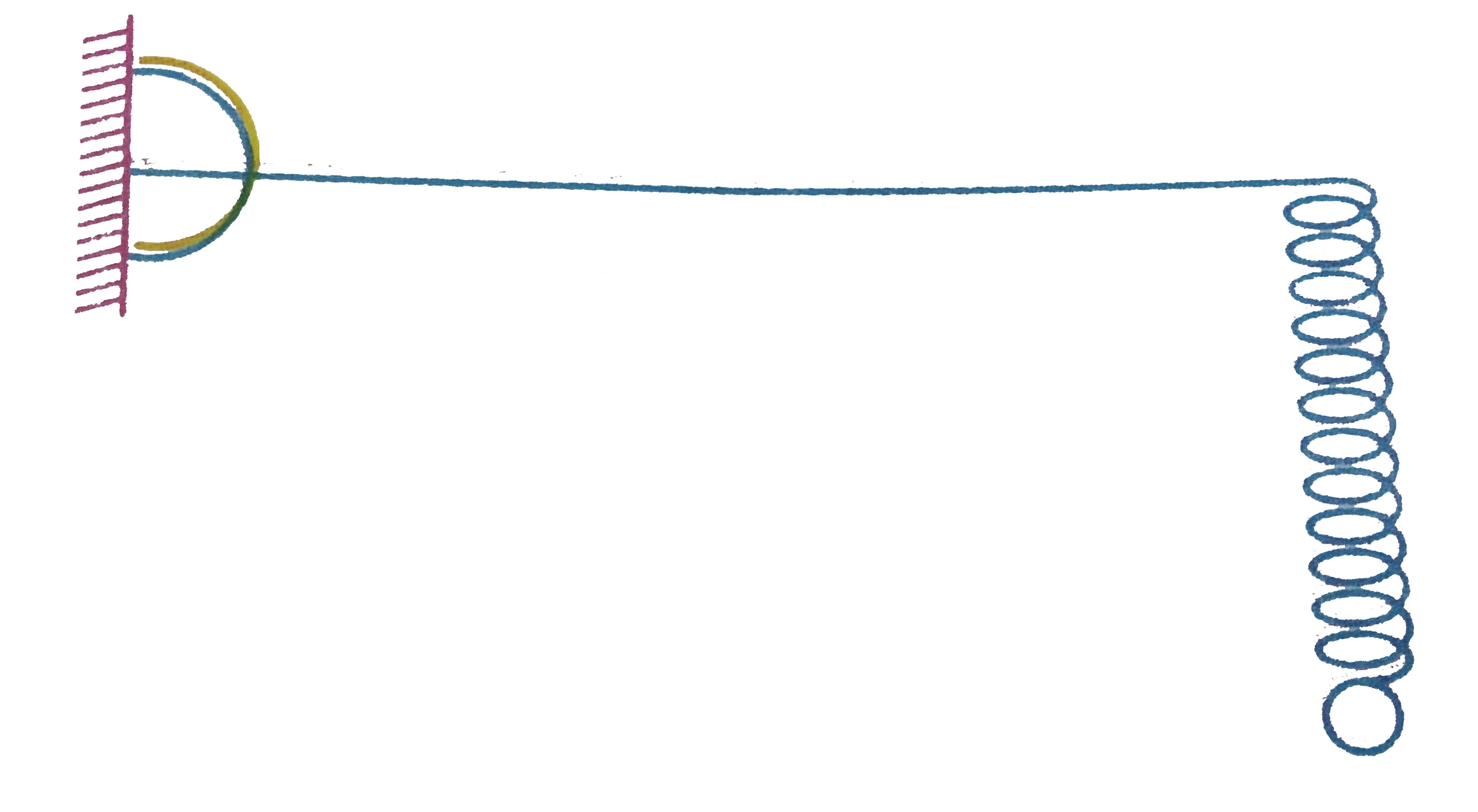
View SolutionThe following four wires are made of the same material. Which of these will have the largest extension when the same tension is applied
View SolutionWhen temperature of a gas is `20^@C` and pressure is changed from `p_(1)= 1.01 xx 10^(5) Pa` to `p_(2) = 1.165 xx 10^(5) Pa`, the volume changes by `10%`. The bulk modulus is
View SolutionTwo rods of equal cross-sections, one of copper and the other of steel are joined to from a composite rod of length `2.0m` at `20^(@)C` the length of the copper rod is `0.5m`. When the tempertuare is raised to `120^(@)C`, the length of composite rod increases to `2.002m`. If the composite rod is fixed between two rigid walls and thus not allowed to expand, it is foundthat the length fo the component rod also do not change with increase in temperature. Calcualte the Young's modulus of steel. Given Young's modulus of copper `= 1.3xx10^(11) N//m^(2)` the coefficent of linear expansion of copper `alpha_(C) = 1.6xx10^(-5)//.^(@)c`
View SolutionA highly rigid cubical block `A` of small mass `M` and side `L` is fixed rigidly on the other cubical block of same dimensions and of modulus of rigidity `eta` such that the lower face of `A` completely covers the upper face of `B`. The lower face of `B` is rigidly held on a horizontal surface . `A` small force `F` is applied perpendicular to one of the side faces of `A`. After the force is withdrawn , block `A` executes faces of `A`. After the force is withdrawn , block `A` exceutes small oscillations , the time period of which is given by
View SolutionIn determine of youggn modulus of ealsticity of wire, a force is applied and extension is recoreded. Initial length of wire `'1m'` . The curce between extension and stress is depicted then young modulus of wire will be:
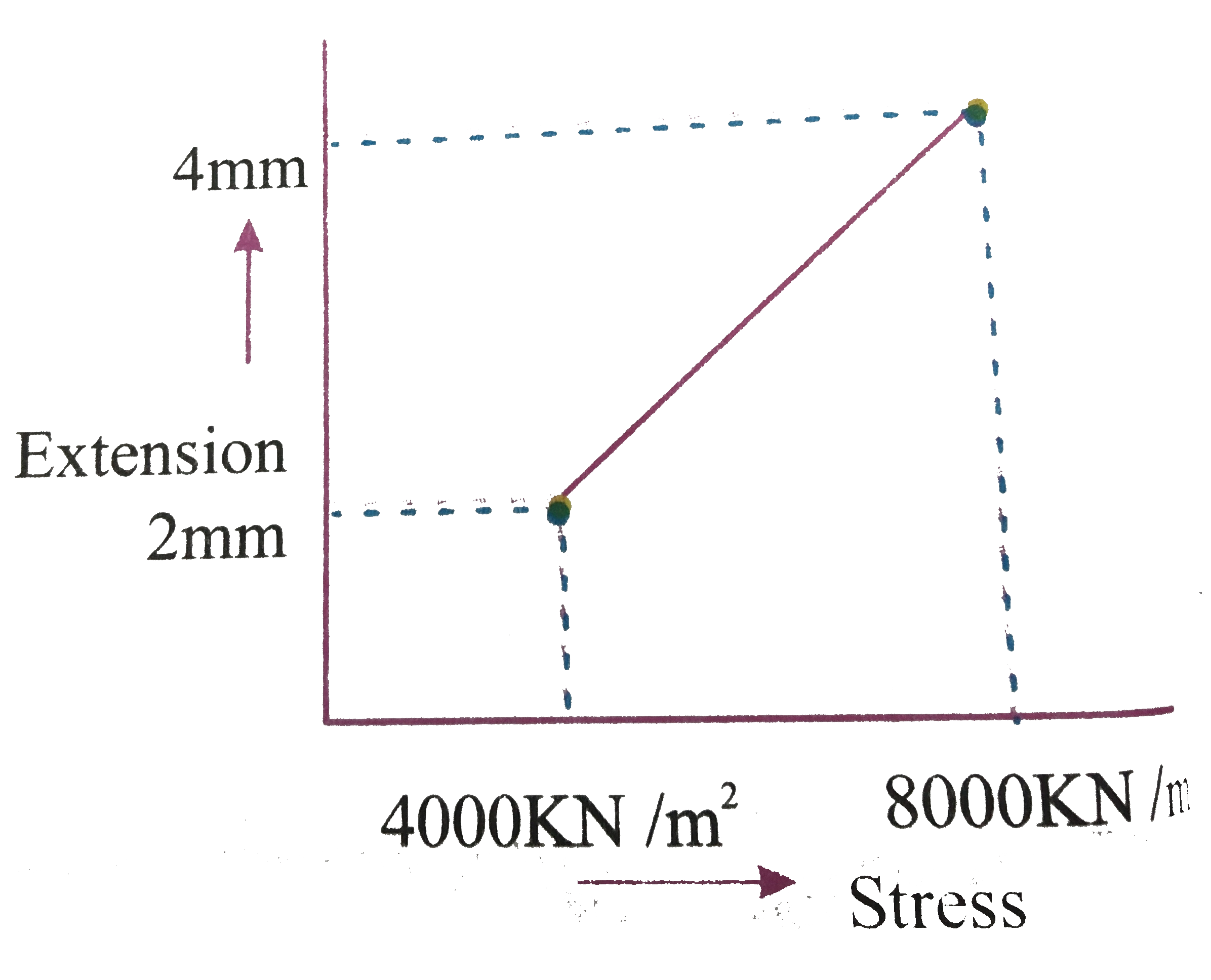
View SolutionFigure shows the graph of elastic potential energy `(U)` stored versus extension, for a steel wire `(Y = 2xx10^(11) Pa)` of volume `200 c c`. If area of cross- section `A` and original length L, then
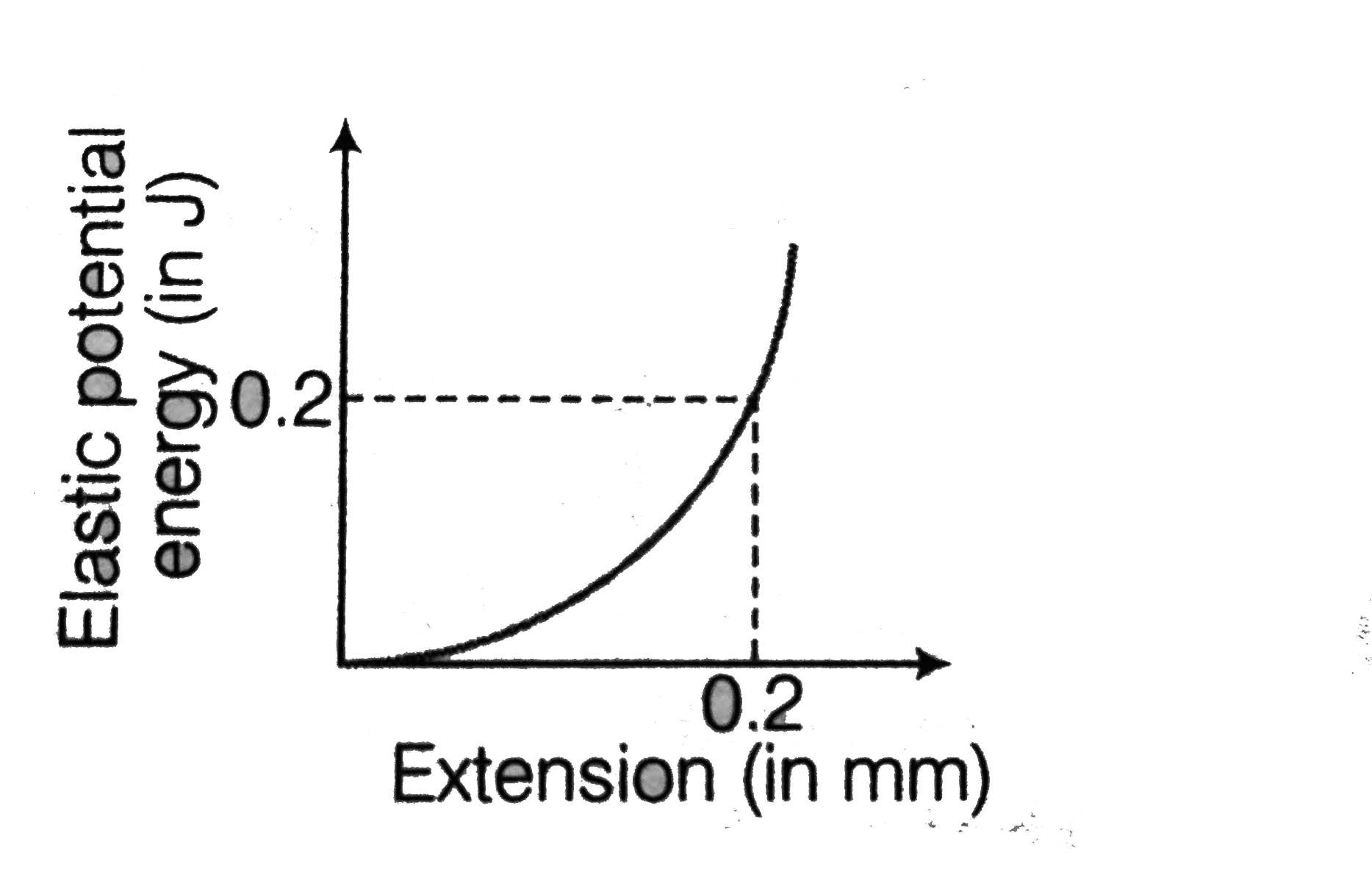
View Solution
SINGLE ANSWER TYPE questions and complete solutions for chapter MECHANICAL PROPERTIES OF SOLIDS of NARAYANA PHYSICS (HINGLISH) of Class 11